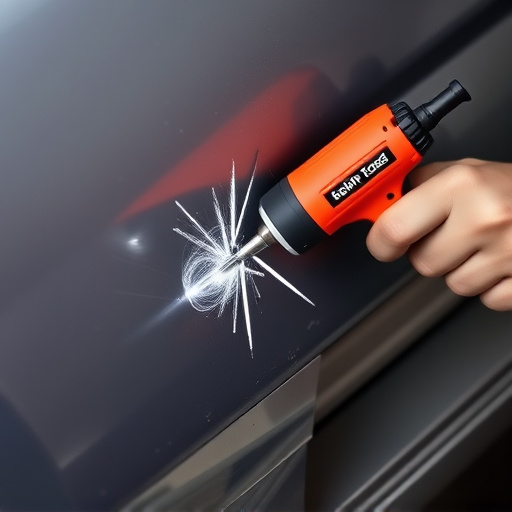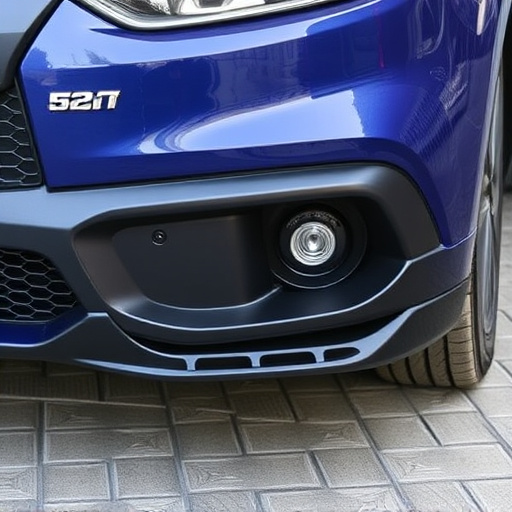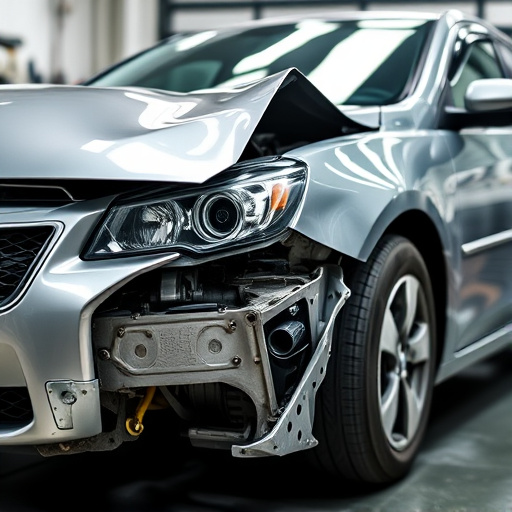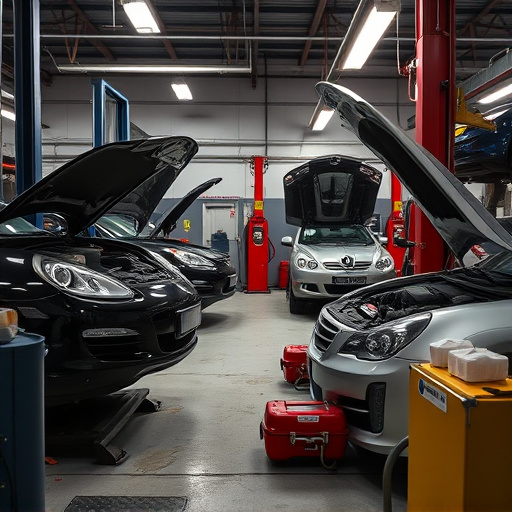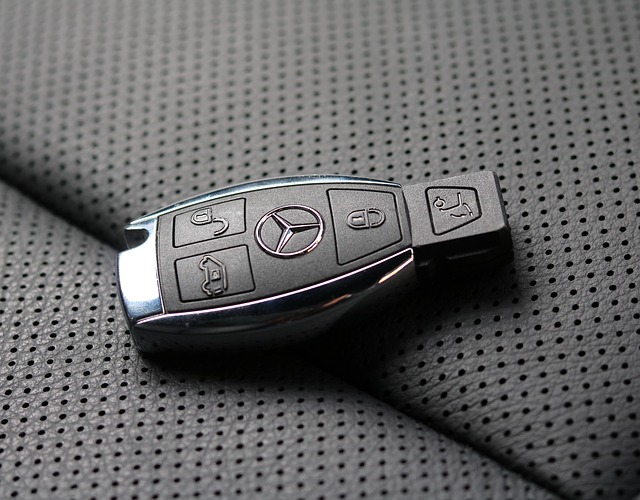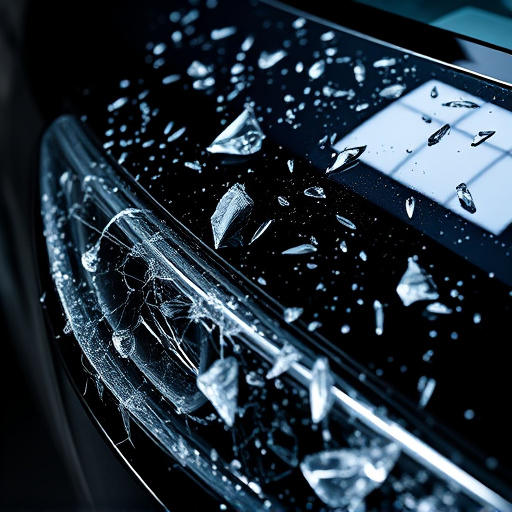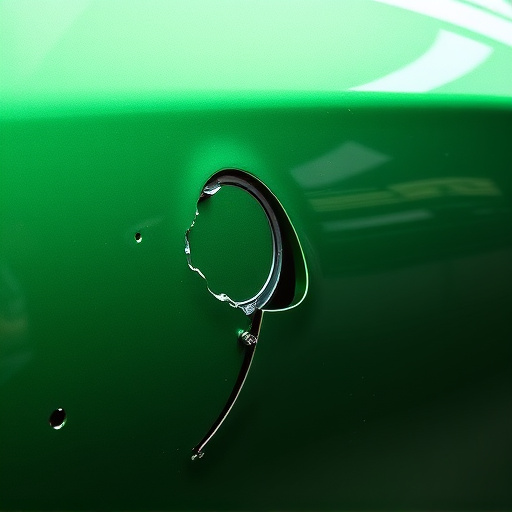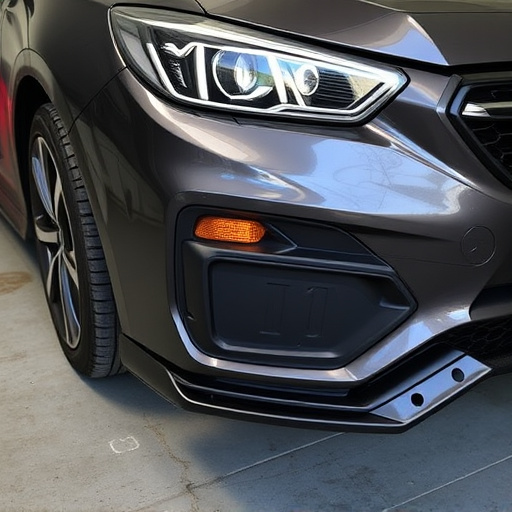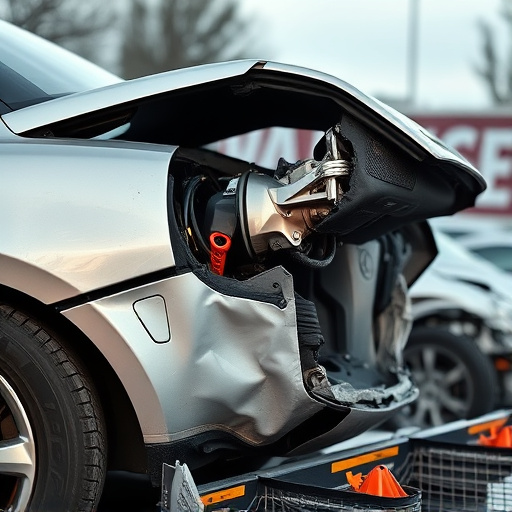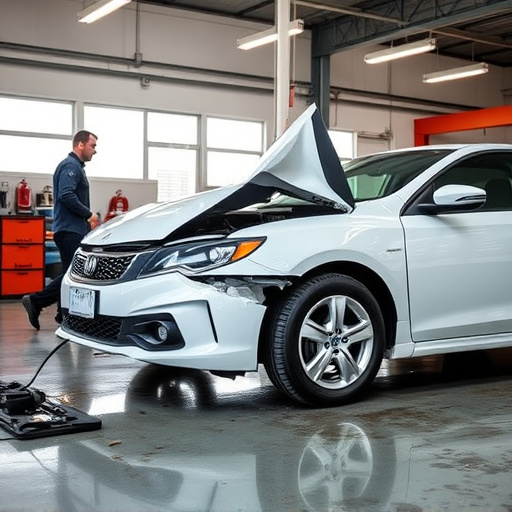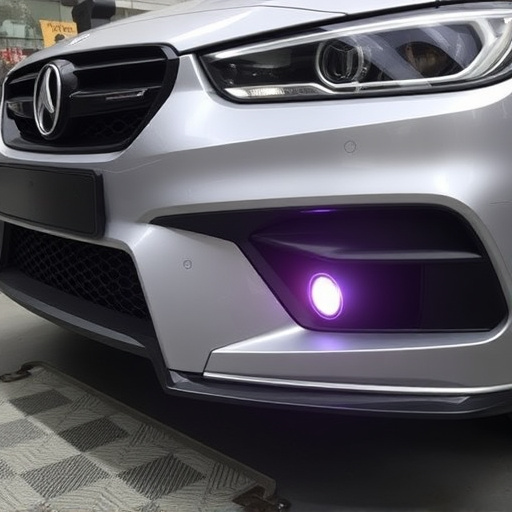Aluminum panel dent repair is a specialized technique for modern vehicles' lightweight and corrosion-resistant aluminum bodywork. Professionals use manual and automated tools like pneumatic hammers and heating elements to precisely pop out and repair dents, maintaining structural integrity and aesthetic appeal. Best practices involve paintless dent repair (PDR) for smaller damage and combining PDR with traditional methods for larger issues, ensuring proper preparation for long-lasting repairs and vehicle value preservation.
Aluminum panel dent repair is a specialized technique crucial for restoring the sleek appearance of modern cars, especially those with aluminum body panels. This article delves into the art and science behind fixing dents on various car models. From understanding the unique challenges of aluminum repairs to exploring step-by-step guides tailored for different vehicles, we provide insights for both professionals and enthusiasts. Learn best practices and techniques that ensure effective and lasting aluminum panel dent repair.
- Understanding Aluminum Panel Dent Repair Techniques
- Step-by-Step Guide for Diverse Car Models
- Common Challenges and Best Practices in Repairs
Understanding Aluminum Panel Dent Repair Techniques

Aluminum panel dent repair is a specialized technique that has revolutionized car bodywork and restoration. Unlike traditional metalworking methods, this process focuses on preserving the integrity of the aluminum panels, which are commonly used in modern car designs due to their lightweight and corrosion-resistant properties. The techniques employed involve a combination of manual and automated tools, including pneumatic hammers, specialized clamps, and advanced heating elements.
Professional auto repair shops and collision centers equipped with the latest technology offer this service, ensuring precise and minimal damage restoration. The process begins by accessing the dented area, often through hidden or accessible panels like doors, fenders, or trunks. Technicians carefully manipulate the metal to pop out the dented section, using controlled heat to facilitate the reshaping without compromising the panel’s structural integrity. Once the dent is removed, the repaired area is meticulously smoothed and primed for painting, resulting in a virtually indistinguishable repair that maintains the car’s original appearance and overall value.
Step-by-Step Guide for Diverse Car Models

The process of aluminum panel dent repair is both an art and a science, requiring precision and skill to restore cars to their original condition. While the fundamental techniques remain consistent across different car models, the approach must be tailored to accommodate various vehicle makes and designs. Here’s a step-by-step guide that serves as a general framework for professionals addressing dents in aluminum panels, focusing on Mercedes Benz repairs as a case study, but applicable to many other vehicle body repairs.
First, assess the dent’s severity and location. For smaller dings or creases, manual techniques like using specialized tools to gently press out the dent may suffice. In more complex cases, especially with deep or uneven damage, auto glass repair methods might be necessary. This involves applying heat or vacuum to facilitate a controlled release of the damaged panel for safe removal. Once the panel is accessible, trained technicians use precision tools to remove any debris and identify the extent of the internal damage. Subsequent steps include replacing the panel (if necessary), re-sealing the surface, and ensuring the repair seamlessly blends with the vehicle’s existing aluminum body, maintaining its structural integrity and aesthetic appeal.
Common Challenges and Best Practices in Repairs

When it comes to aluminum panel dent repair, especially on various car models, several challenges often arise due to the unique properties of this metal. One of the primary difficulties is achieving a seamless finish that matches the vehicle’s original appearance, as aluminum can be more prone to leaving visible dents and marks compared to traditional steel panels. The smooth surface of aluminum also makes it harder for glue or filler to adhere properly, requiring specialized techniques.
Best practices in aluminum panel dent repair involve using advanced methods like paintless dent repair (PDR), which is particularly effective for smaller dings and creases. PDR technicians use specialized tools to gently push out the dented area from behind the panel, ensuring minimal disruption to the original finish. For larger or more complex damages, a combination of PDR and traditional bumper repair techniques might be employed. Proper preparation, including degassing and cleaning the panel before repairs, is crucial to guarantee long-lasting results and maintain the car’s overall value.
Aluminum panel dent repair is a specialized process that has revolutionized car body work, offering cost-effective solutions for various vehicle models. By understanding the unique techniques involved and adhering to best practices, professionals can efficiently restore damaged aluminum panels to their original condition. This comprehensive guide highlights the step-by-step approach tailored to diverse cars, ensuring that repairs are not only effective but also long-lasting. Remember, whether it’s a sleek sports car or a family sedan, proper technique and attention to detail are key to achieving flawless results in aluminum panel dent repair.
